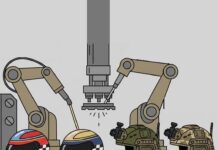A new rare earth magnet production factory has opened in Narva, northeastern Estonia. This is a rare and strategically important initiative that could help Europe reduce its dependence on China for critical technologies.
The new factory, built by Neo Performance Materials with support from the European Union through the Just Transition Fund, is capable of producing approximately 2,000 metric tons of magnet blocks per year: enough for electric vehicles and offshore wind turbines.
Objectives of the Project
This plant is part of a broader EU strategy to strengthen supply chains for critical materials.
Rare earth magnets are essential for electric vehicle motors, wind turbines, household appliances, and other green technologies. Until now, the EU has imported the vast majority of these magnets from China, posing risks to the sustainability of production and geopolitical security.
The project also aims to economically transform the region.
Narva, previously closely linked to the extraction of oil shale, a highly carbon-intensive fuel, is now receiving the opportunity to develop its technology industry and create jobs.
The plant is supported by the Just Transition Fund: Estonia received a grant of approximately €18.75 million for construction, with the remainder coming from private sources. The total project value is estimated at €75–100 million.
Operations: How?
Materials will be sourced from abroad and processed at the new plant.
A rare earth element separation facility already operates in Silmäe, Estonia, enabling the creation of a vertically integrated supply chain from material to magnet.
Magnet recycling is also planned, allowing some of the material from old or discarded magnets to be recycled back into production. This is an important element of the circular economy, reducing the need for primary supplies.
Strategic Advantages
- Reduced Dependency: The EU can meet part of the demand locally, reducing the risk of disruptions and geopolitical dependence.
- Regional Development: Narva and Ida-Virumaa, historically dependent on oil/shale production, now have an alternative and the prospect of economic growth with a smaller carbon footprint.
- Green Transition: Magnets are used in electric vehicles, wind power, and other “green” sectors, so the ability to produce them within the EU accelerates the transition to a low-carbon economy.
Strategic Challenges:
- Raw Materials and Supplies: Rare earth elements must be imported from Australia and Malaysia, which still creates dependent supply chains on the global market.
- Cost and Competition: Producing magnets in Europe can be more expensive than importing from low-cost countries, especially with low-cost Chinese supplies.
- Lack of Physical and Human Capital: specialist training, technological equipment, and compliance with quality standards are required.
The new Narva plant is a significant milestone in Europe’s quest to build a sustainable and reliable industrial base for green technologies.
It exemplifies how, with the right government support and private sector funding, it is possible to transform industry, reduce emissions, whilst strengthening EU sovereignty in it’s internal market.
Success will depend on addressing raw material supply issues, cost optimisation, sustainable production, and the ability to compete globally.
If these challenges are overcome, the Narva plant could become a symbol of a new era — one in which Europe not only consumes green technologies but also produces them itself.
Read the Latest Articles on DET!
Suez on Rails: China is Changing the Map
Plucked Out of Thin Air? How Meteorologists Name Storms
I Need My Labubu: Wang Ning’s Billion Dollar Toy





